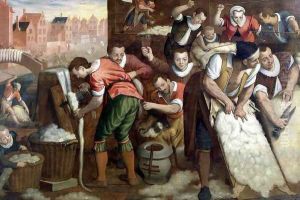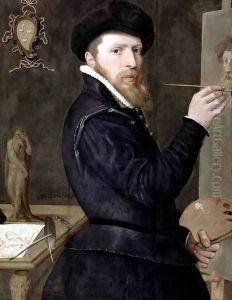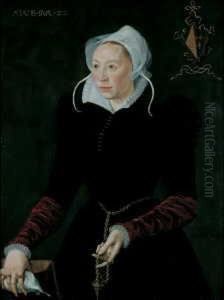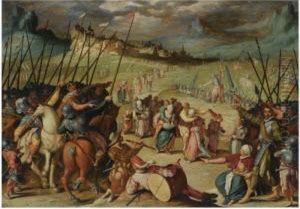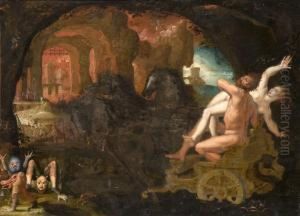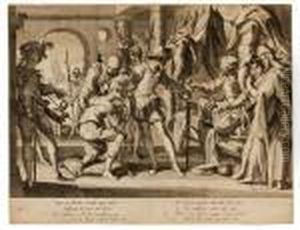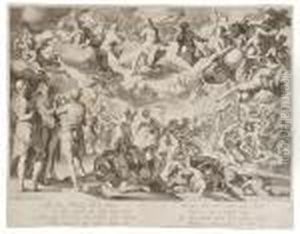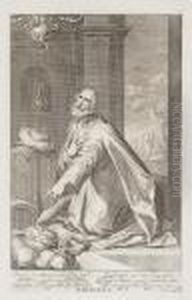Isaac Claesz. Van Swanenburg Paintings
Isaac Claesz. van Swanenburg was a notable Dutch painter, draftsman, and printmaker active during the late Renaissance period, contributing significantly to the art scene of his time. Born in 1537 in Leiden, Netherlands, into a family with artistic connections, Swanenburg was destined to make his mark in the world of art. His father, Claes van Swanenburg, was also involved in the arts, which likely provided Isaac with an early exposure to painting and artistic expression. Throughout his career, Isaac van Swanenburg became renowned for his meticulous works, which included religious scenes, portraits, and particularly, scenes of hell and allegorical representations, showcasing his versatility and mastery over different subjects.
Swanenburg's education and training as an artist might have included apprenticeships with local masters, which was typical of the period. Although specific details about his early training are scarce, it is evident through his work that he possessed a deep understanding of the human form, perspective, and the use of color, skills that were honed over years of practice and study. In 1561, he married Margaretha Gerritsdr, which was a significant event in his personal life that led to the birth of several children, including Jacob Isaacsz. van Swanenburg, who would also pursue a career in art, continuing the family tradition.
Throughout his career, Isaac van Swanenburg held several important positions in his hometown of Leiden. Notably, he served as the mayor of Leiden three times, which underscored his esteemed status in the community and his ability to juggle his civic duties with his artistic pursuits. His role in the city's governance did not hinder his productivity as an artist; instead, it provided him with a unique vantage point to observe and depict society, which often found its way into his art.
Swanenburg's paintings are characterized by their detailed depiction of figures and landscapes, as well as their vibrant color palette. His works were not only appreciated in his homeland but also gained recognition abroad, contributing to his reputation as a skilled artist of the Renaissance. Despite the high regard for his paintings, much of Swanenburg's fame also comes from his work as a printmaker, where his technical skills and artistic vision allowed him to produce works with intricate details and depth.
Isaac Claesz. van Swanenburg passed away in 1614, leaving behind a legacy that would influence the Dutch art scene for years to come. His contributions to painting, particularly in the genres he specialized in, continued to inspire and influence artists well beyond his time. Today, Swanenburg's works are preserved in several museums and collections worldwide, where they continue to be studied and admired for their craftsmanship and unique perspective on the Renaissance era in the Netherlands.
